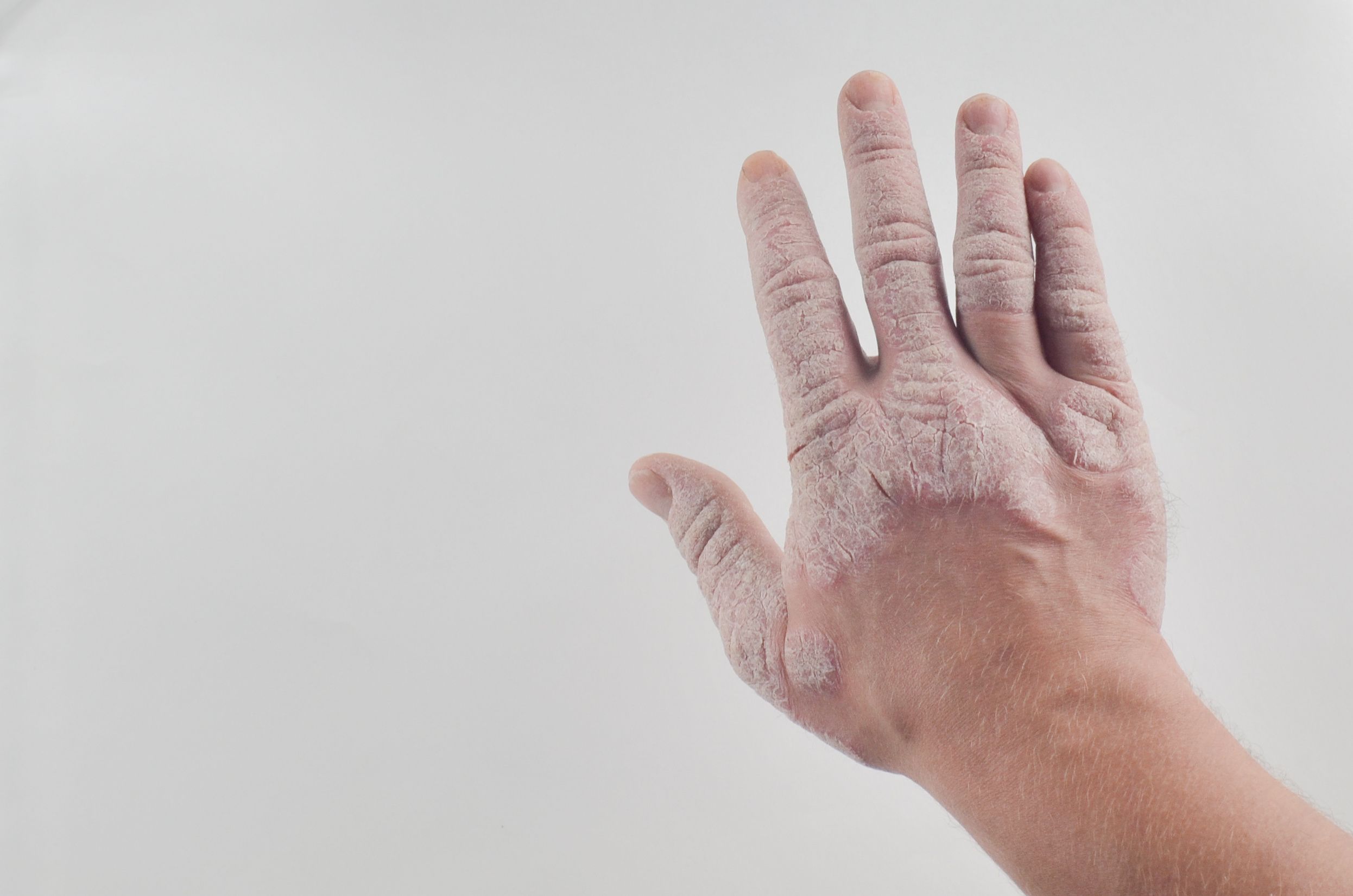- Case-Based Roundtable
- General Dermatology
- Eczema
- Chronic Hand Eczema
- Alopecia
- Aesthetics
- Vitiligo
- COVID-19
- Actinic Keratosis
- Precision Medicine and Biologics
- Rare Disease
- Wound Care
- Rosacea
- Psoriasis
- Psoriatic Arthritis
- Atopic Dermatitis
- Melasma
- NP and PA
- Skin Cancer
- Hidradenitis Suppurativa
- Drug Watch
- Pigmentary Disorders
- Acne
- Pediatric Dermatology
- Practice Management
- Prurigo Nodularis
- Buy-and-Bill
Publication
Article
Dermatology Times
Ultrasound lends a hand in assessing inflammation in psoriatic arthritis
Author(s):
A recent study shows promising results for using ultrasound to examine hand tendon and joint inflammation in psoriatic arthritis patients.
Ultrasound can help physicians identify problem areas that could otherwise be missed in a typical clinical examination. (Viktar - stock.adobe.com)

Utilizing ultrasound (US) may be the best and least invasive method to examine hand joint and tendon inflammation in psoriatic arthritis (PsA) patients, according to a new study.
RELATED: Screening psoriasis patients for psoriatic arthritis
In the study conducted by the University of Medicine and Pharmacy of Craiova, Romania, researchers found when musculoskeletal ultrasonography (MUS) is used on PsA patients, physicians are able to thoroughly assess PsA in order to improve the diagnosis, prognosis and possible treatments of the condition.
Between 2016-2018, researchers studied 28 PsA patients in the Department of Rheumatology of the Emergency Clinical County Hospital of Craiova who exhibited swelling and pain in the small joints of their hands and wrists.
Due in part to the lack of studies involving US in PsA patients, researchers compared their particular study to research examining the use of MUS in rheumatoid arthritis patients.
Across 28 patients, 840 joints were clinically analyzed alongside US. Clinical evaluation results showed 59 joints were tender while 32 joints displayed signs of swelling.
While differentiating between arthritis, enthesopathy and tenosynovitis proved to be difficult at times during clinical assessments, the two-year study proved US was useful in showing the particular pathology that affected joints.
RELATED: The multifaceted faces of arthritis in psoriasis
The study also revealed when MUS was utilized, researchers were able to take a deeper look into the affected joints and tendons to identify more problems areas not otherwise known during the clinical examination.
“Apparently normal joints upon clinical examination may present synovial hypertrophy or power Doppler signal using MUS examination, thus proving the utility of MUS in identifying more affected joints,” the authors of the study state.
When MUS was used on PsA patients, researchers found synovial proliferation in 108 of the 840 examined sites, in which four of the 108 identified joints presented grade 1 synovitis, 94 joints with grade 2 and 10 joints with grade 3. The study also identified 280 fingers that exhibited 5.71% dactylitis using MUS.
“Ultrasound has proven its utility in assessing joint and tendon inflammation to a higher extent than clinically expected. It is a safe, inexpensive, non-invasive method, accessible in the majority of hospitals and clinical practice,” according to the authors of the study.
US is not a revolutionary new technology, but according to the results of the study, it offers physicians an easy, noninvasive and inexpensive method to to safely examine the extent of a patient’s psoriatic arthritis, and can help them identify problem areas that could otherwise be missed in a typical clinical examination.
References:
Florescu A, MuÈetescu AE, Florescu LM, et al. The Role of Ultrasound in Assessing Hand Joints and Tendons in Psoriatic Arthritis. Curr Health Sci J. 2019;45(2):198–203. doi:10.12865/CHSJ.45.02.11

Newsletter
Like what you’re reading? Subscribe to Dermatology Times for weekly updates on therapies, innovations, and real-world practice tips.





